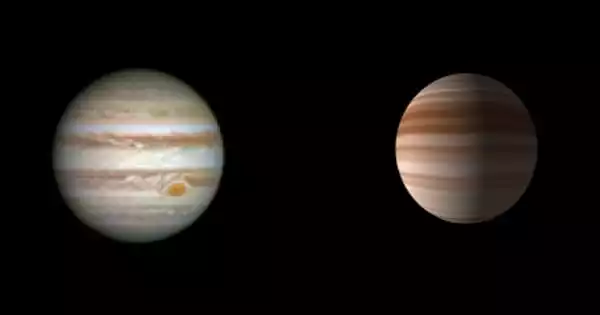A NASA autonomous vehicle named Perseverance landed to the Jezero Crater (the bed of an ancient, now dried-up lake on Mars) on February 18, 2021. The rover is outfitted with seven cutting-edge, sophisticated scientific instruments that are used to explore the planet’s surface in search of potential signs of past life, gather and deposit samples that will be returned to Earth, test new technologies for use in human exploration, and conduct in-depth research on the atmosphere of the planet.
With regard to the aim of studying the atmosphere, the MEDA (Mars Environmental Dynamics Analyzer) instrument has been obtaining novel results. MEDA’s lead researcher is José Antonio Rodríguez-Manfredi of the Centre for Astrobiology (CAB) in Madrid, and it has had the participation of a team from the UPV/EHU’s Planetary Sciences Research Group.
The device is made up of a number of sensors that detect the conditions on Mars, including temperature, pressure, wind, humidity, and the characteristics of the dust that is always present in suspension in the atmosphere.
The examination of the atmosphere by Perseverance throughout the first Martian year (which lasts approximately two Earth years) is now complete. The journal Nature Geoscience just released its January issue, which features a sneak peek of the findings on the cover.
Specifically, the UPV/EHU team, formed by Agustín Sánchez-Lavega, Ricardo Hueso, Teresa del Río-Gaztelurrutia and the PhD student Asier Munguira, has led the study of the seasonal and daily cycles of temperature and pressure, as well as their significant variations on other time scales resulting from very different processes.
The dust devils are more abundant at Jezero than elsewhere on Mars, and can be very large, forming whirlwinds more than 100 metres in diameter. With MEDA we have been able to characterise not only their general aspects (size and abundance) but also to unravel how these whirlwinds function.
Ricardo Hueso
The Jezero Crater, close to the planet’s equator, has year-round average air temperatures of about minus 55 degrees Celsius, but day and night temperatures range significantly, typically by around 50 to 60 degrees.
Due to the rise and fall of air masses (convection), which stop in the evening when the air settles, the warmth of the surface causes turbulent air movements in the middle of the day.
The tenuous Martian atmosphere changes seasonally due to the melting and freezing of atmospheric carbon dioxide at the polar caps, as well as a complex, variable daily cycle that is influenced by thermal tides in the atmosphere. On the other hand, pressure sensors show these seasonal changes in detail.
“The pressure and temperature of the Mars atmosphere oscillate with periods of the Martian solar day (somewhat longer than the Earth’s, it averages at 24 hrs 39.5 min) and with their submultiples, following the daily cycle of sunshine greatly influenced by the amount of dust and the presence of clouds in the atmosphere,” says Agustín Sánchez-Lavega, professor at the Faculty of Engineering Bilbao (EIB) and co-researcher on the Mars 2020 mission.
Both sensors are also picking up on dynamic atmospheric phenomena that happen close to the rover, such as gravity waves whose origin is still unclear or whirlwinds that are frequently referred to as “dust devils” because of the dust they may sometimes whip up.
“The dust devils are more abundant at Jezero than elsewhere on Mars, and can be very large, forming whirlwinds more than 100 metres in diameter. With MEDA we have been able to characterise not only their general aspects (size and abundance) but also to unravel how these whirlwinds function,” says Ricardo Hueso, lecturer at the Faculty of Engineering Bilbao (EIB).
Images from circling satellites have also revealed the presence of storms thousands of kilometers away that are extremely similar to terrestrial storms in origin and travel along the edge of the north polar cap, which was created by the deposition of carbonic snow.
MEDA has been able to characterize in detail the changes that have occurred in the atmosphere by one of the dreaded dust storms, such as the one that emerged in early January 2022, within the rich diversity of phenomena researched.
Strong gusts of wind and rapid variations in temperature and pressure that occurred as it passed over the rover damaged one of the wind sensors by kicking up dust and striking the equipment.
“MEDA is providing high-precision, meteorological measurements enabling the Martian atmosphere to be characterised, for the first time, from local scales at distances of a few metres, as well as on the global scale of the planet by collecting information on what is happening thousands of kilometres away. All this will lead to a better understanding of the Martian climate and improve the predictive models we use,” says Sánchez-Lavega.
The data collected by the Perseverance Rover will also be valuable for future human missions to Mars, as it will provide important information about the conditions astronauts will face on the surface of the planet.
















